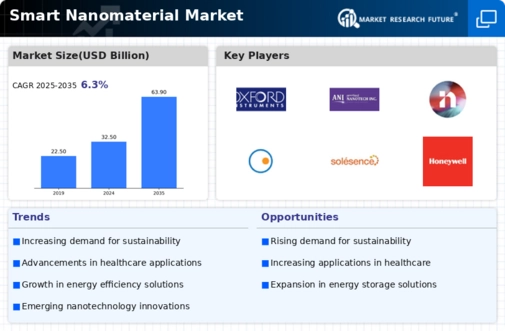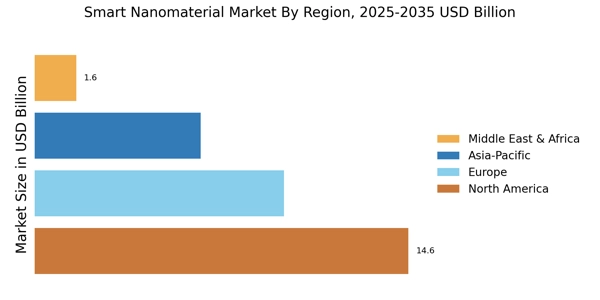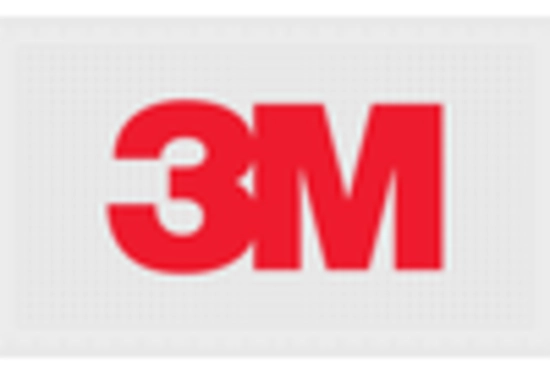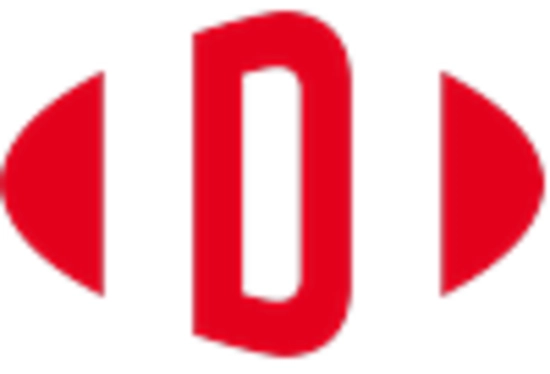Expanding Applications in Healthcare
The Smart Nanomaterial Market is witnessing an expansion of applications in the healthcare sector. Innovations in drug delivery systems utilizing smart nanomaterials are enhancing therapeutic efficacy and reducing side effects. For instance, targeted drug delivery mechanisms are being developed to improve treatment outcomes for various diseases, including cancer. The Smart Nanomaterial Market is projected to grow significantly, and the integration of smart nanomaterials is likely to play a pivotal role in this growth. As healthcare providers seek more effective solutions, the demand for smart nanomaterials is expected to rise, further propelling the market.
Rising Demand for Advanced Materials
The Smart Nanomaterial Market is experiencing a notable surge in demand for advanced materials across various sectors. Industries such as aerospace, automotive, and construction are increasingly adopting smart nanomaterials due to their superior properties, including lightweight, strength, and durability. For instance, the aerospace sector is projected to utilize smart nanomaterials to enhance fuel efficiency and reduce emissions. This trend is expected to drive the market, as the need for innovative materials that can withstand extreme conditions becomes paramount. Furthermore, the global market for advanced materials is anticipated to reach substantial figures, indicating a robust growth trajectory for the Smart Nanomaterial Market.
Technological Advancements in Nanotechnology
Technological advancements in nanotechnology are propelling the Smart Nanomaterial Market forward. Innovations in synthesis and characterization techniques are enabling the development of new nanomaterials with tailored properties. For example, the emergence of 3D printing technologies utilizing smart nanomaterials is revolutionizing manufacturing processes, allowing for the creation of complex structures with enhanced functionalities. The integration of artificial intelligence in material design is also streamlining the discovery of novel nanomaterials. As these technologies evolve, they are likely to expand the application range of smart nanomaterials, thereby fostering growth in the market.
Increased Investment in Research and Development
Investment in research and development is a critical driver for the Smart Nanomaterial Market. Governments and private entities are allocating significant resources to explore the potential applications of smart nanomaterials in various fields, including healthcare, energy, and environmental remediation. For instance, funding for nanotechnology research has seen a marked increase, with several initiatives aimed at developing sustainable solutions. This influx of investment is expected to accelerate innovation and commercialization of smart nanomaterials, ultimately enhancing their market presence. The commitment to R&D signifies a strong belief in the transformative potential of smart nanomaterials.
Growing Environmental Concerns and Sustainability
The Smart Nanomaterial Market is increasingly influenced by growing environmental concerns and the push for sustainability. As industries strive to reduce their ecological footprint, smart nanomaterials offer promising solutions. For example, nanomaterials are being utilized in water purification systems, enabling efficient removal of contaminants. Additionally, the development of biodegradable nanomaterials is gaining traction, aligning with global sustainability goals. The market is likely to benefit from this trend, as consumers and businesses alike prioritize environmentally friendly products. This shift towards sustainability is expected to create new opportunities for the Smart Nanomaterial Market.


















Leave a Comment